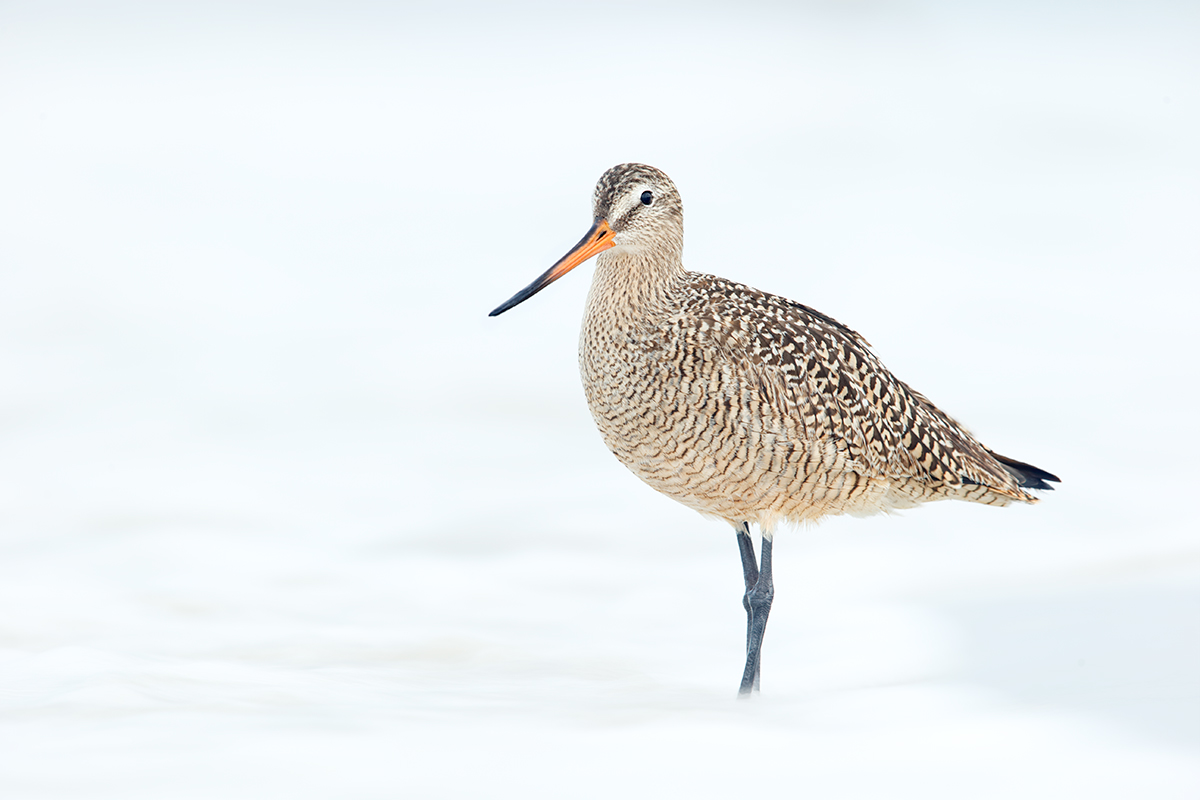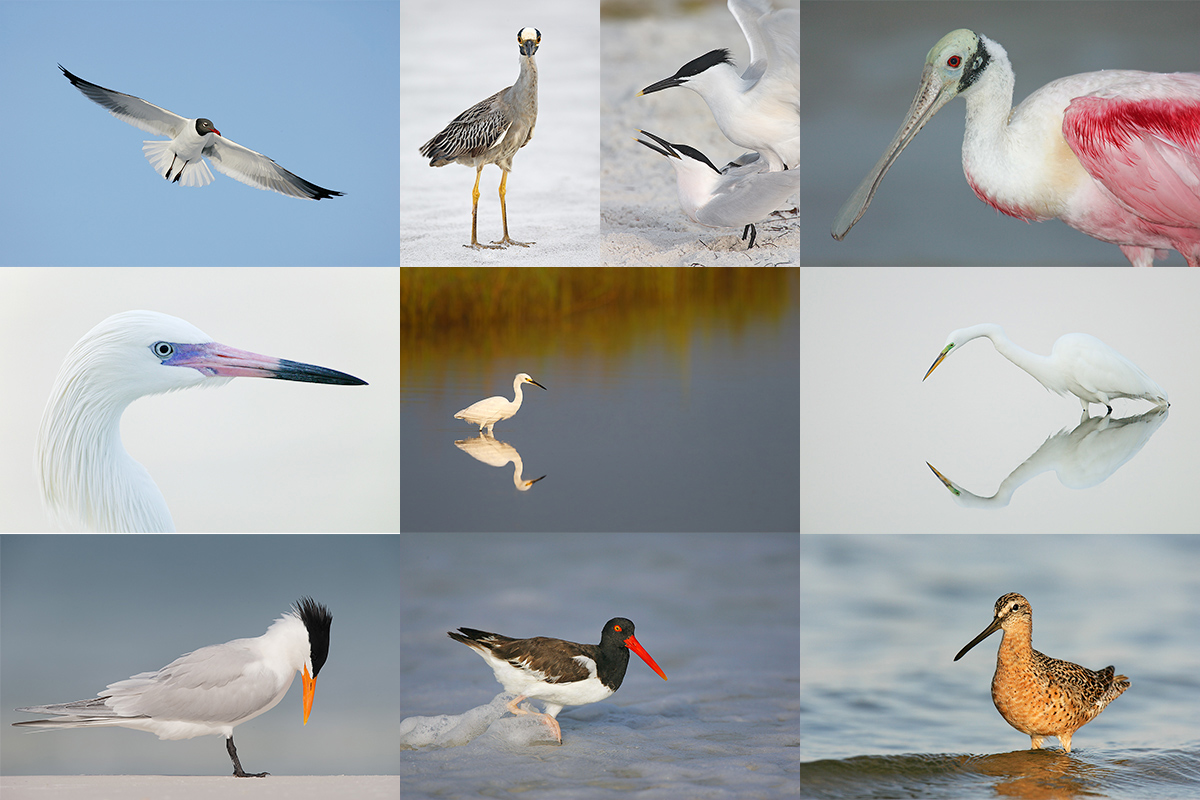What’s Up?
I hope that I am doing well somewhere in Namibia. If all goes well and I stay out of trouble, I will be back in the office late on the afternoon of Friday, April 29.
Don’t Look Now!
Today’s blog post marks 164 days in a row with a new educational blog post… As always-–and folks have been doing a really great job recently–-please remember to use our B&H links for your major gear purchases. For best results use one of our many product-specific links; after clicking on one of those you can continue shopping with all subsequent purchases invisibly tracked to BAA. Your doing so is always greatly appreciated. Please remember: web orders only. Please remember that if you are shopping for items that we carry in the BAA Online Store (as noted in red at the close of this post below) we would appreciate your business.
|
This image was created at Fort DeSoto with the Induro GIT 304L/Mongoose M3.6-mounted Canon EF 600mm f/4L IS II USM lens, the Canon Extender EF 1.4X III, and the rugged Canon EOS-1D X. ISO 100. Evaluative metering +1 stop: 1/15th sec. at f/7.1. Two AF points up and one row to the right of the center AF point/AI Servo Expand/Rear Focus AF as framed was active at the moment of exposure. Click here to see the latest version of the Rear Focus Tutorial. Click on the image to see a larger version. Breeding plumage male Marbled Godwit |
High Wind Slow Shutter Speed Gamble Pays Off
When I first saw this image–I processed it on SAT April 9, 2016–I was confused. The bird is sharp, but wWhere did all that silky, dreamy water come from? Then I looked at the EXIF: 1/15 sec. And everything made sense. It had been a very windy morning and I went slow in hopes of getting the bird sharp and the wind-blown water pleasingly blurred. AtWith 840mm at 1/15th sec., I’d expect to get the bird sharp about half the time at most. I need to remember this technique and use it more often.
Lots on Marbled Godwit
Marbled Godwit was my spark bird. When I saw a gorgeous Marbled Godwit in fresh juvenal plumage on the South Flats at the East Pond at Jamaica Bay Wildlife Refuge in Queens, NY in August of 1976, I had no idea that seeing that single bird would drastically change the course of the remainder of my adult life. But it did. And very much for the good. The long, up-curved bill of that bird with its alabaster pink base is burned in my memory.
I saw my first breeding plumaged Marbled Godwits in Montana in spring; the winter, non-breeding pink base to the bill turns orange in May and June. The plumage remains the same. In this species only the change in bill color signifies breeding plumage. Marbled Godwit, North America’s second largest shorebird after Long-billed Curlew, remains one of my very favorite shorebird species. There is no better place to photograph them from winter through mid-May than Fort DeSoto. And best of all, by late April it is not uncommon to see them with their orange-based bills. Like most of the birds at DeSoto, this species can be silly tame. If you get low and move slowly head portraits are possible. BTW, the bird in today’s featured image is surely a male. The females at the long end of the bill size spectrum feature very long, pig-sticker bills. In the middle of the bill length spectrum there is lots of overlap, but the shortest billed males are always easy to differentiate from the longest billed females. All the Long-billed Curlews will be gone in May, headed for their prairie breeding grounds but there is a good chance that we will still have some good chances with Marbled Godwit on the DeSoto IPT.
Shorebirds: Beautiful Beachcombers
If you enjoy watching and learning about shorebirds, you will surely want to get a copy of my soft-cover book, Shorebirds: Beautiful Beachcombers. It simplifies the aging and identification of all of the regularly occurring North American shorebird species and fills you in nicely on their migratory, breeding, and feeding strategies. You can order a copy here. This book is out of print and we have only a very few copies remaining…
|
DeSoto in spring is rife with tame and attractive birds. From upper left clockwise to center: breeding plumage Dunlin, dark morph breeding plumage Reddish Egret displaying, breeding plumage Laughing Gull/front end vertical portrait, breeding plumage Laughing Gull with prey item, Laughing Gull on head of Brown Pelican, screaming Royal Tern in breeding plumage, Royal Terns/pre-copulatory stand, Laughing Gulls copulating, breeding plumage Laughing Gull/tight horizontal portrait, Sandwich Tern with fish, and a really rare one, White-rumped Sandpiper in breeding plumage, photographed at DeSoto in early May. |
Fort DeSoto IPT: May 10-13, 2016. 3 1/2 DAYS: $1399. Limit: 10/Openings: 1.
Meet and Greet at 3pm on Tuesday May 10.
Fort DeSoto is one of the rare locations that might offer great bird photography 365 days a year. It shines in spring. There will Lots of tame birds including breeding plumage Laughing Gull and Royal and Sandwich Terns. With luck, we will get to photograph all of these species courting and copulating. There will be American Oystercatcher and Marbled Godwit plus sandpipers and plovers, some in full breeding plumage. Black-bellied Plover and Red Knot in stunning breeding plumage are possible. There will be lots of wading birds including Great and Snowy Egrets, both color morphs of Reddish Egret, Great Blue, Tricolored and Little Blue Heron, Yellow-crowned Night-Heron, and killer breeding plumage White Ibis. Roseate Spoonbill and Wood Stork are possible and likely. We should have lots of good flight photography with the gulls and terns and with Brown Pelican. Nesting Least Tern and nesting Wilson’s Plover are possible.
We will, weather permitting, enjoy 7 shooting sessions. Our first afternoon session will follow the meet and greet on Tuesday May 10. For the next three days we will have two daily photo sessions. We will be on the beach early and be at lunch (included) by 11am. At lunch we will review my images–folks learn a ton watching me choose my keepers and deletes–why keep this one and delete that one? If you opt to bring your laptop, we will be glad take a look at a few of your best images from the morning session. We will process an image or two in Photoshop after converting them in DPP. Our lunch learning session will be followed by a break that for me will include Instructor Nap Time. Afternoon sessions will generally run from 4:30pm till sunset. We photograph until sunset on the last day, Friday the 13th… Please note that this is a get-your-feet and get-your-butt wet and sandy IPT. And that you can actually do the whole IPT with a 300 f/2.8L IS, a 400 f/4 ID DO lens with both TCs, or the equivalent Nikon gear. I will likely be using my new 500 II as my big glass and have my 100-400 II on my shoulder.
|
DeSoto in spring is rife with tame and attractive birds. From upper left clockwise to center: Laughing Gull in flight, adult Yellow-crowned Night-Heron, copulating Sandwich Terns, Roseate Spoonbill, Great Egret with reflection, Short-billed Dowitcher in breeding plumage, American Oystercatcher, breeding plumage Royal Tern, white morph Reddish Egret, and Snowy Egret marsh habitat shot. |
What You Will Learn
You will learn to approach free and wild birds without disturbing them, to understand and predict bird behavior, to identify many species of shorebirds, to spot the good situations, to understand the effects of sky and wind conditions on bird photography, to choose the best perspective, to see and understand the light, to get the right exposure every time after making a single test exposure, and to design pleasing images by mastering your camera’s AF system. And you will learn how and why to work in Manual mode (even if you are scared of it).
The group will be staying at the Magnuson Hotel/Marina Cove, 6800 Sunshine Skyway Lane South, St. Petersburg, FL, 33711. Tel: 727-867-1151. I use Hotels.com. The best airport is Tampa (TPA). A deposit of $499 is required to hold your spot. Your balance will be due on March 10, 2016. Please call Jim or Jennifer at 863-692-0906 to register. The $5 park entry fee is on you. Tight carpools are recommended. The cost of three lunches is included. Breakfasts are grab what you can on the go, and dinners are also on your own due to the fact that we will usually be getting back to the hotel at about 9pm. Non-photographer spouses, friends, or companions are welcome for $100/day, $350 for the whole IPT.
Please Remember to use our Affiliate Links 🙂
To show your appreciation for my continuing efforts here, we ask, as always, that you get in the habit of using my B&H affiliate links on the right side of the blog for all of your photo and electronics purchases. Please check the availability of all photographic accessories in the BIRDS AS ART Online Store, especially the Mongoose M3.6 tripod heads, Gitzo tripods, Wimberley heads and plates, LensCoats and accessories, and the like. We sell only what I have used, have tested, and can depend on. We will not sell you junk. We know what you need to make creating great images easy and fun. And we are always glad to answer your gear questions via e-mail. I just learned that my account was suspended during my absence; it should be up and running by Monday at the latest.
I would of course appreciate your using our B&H affiliate links for all of your major gear, video, and electronic purchases. For the photographic stuff mentioned in the paragraph above we, meaning BAA, would of course greatly appreciate your business. Here is a huge thank you to the many who have been using our links on a regular basis and visiting the BAA Online store as well.
Be sure to like and follow BAA on Facebook by clicking on the logo link upper right. Tanks a stack!
Typos
In all blog posts and Bulletins, feel free to e-mail or to leave a comment regarding any typos or errors. Just be right 🙂

















Great image! The bird is nearly posing for you! The large amount of orange at the base of the bill is striking !
I will try this technique sometime!
🙂
a
Looks great. I’m surprised that 1/15th was sufficient to get that degree of blur, must have been pretty windy!
To get cotton candy, usually takes me about 10 seconds. To get smoke, usually is 30 seconds or more. It must have been very unique conditions. This does give me a great idea for a comp though.
Was 🙂 a